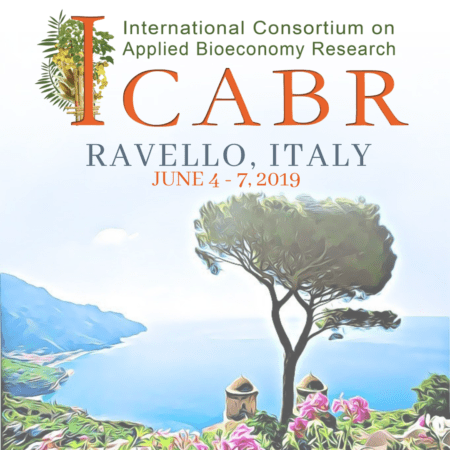 From June 4-7, 130 people from academia (including myself), government and industry, convened in Ravello, Italy, to share, listen and discuss the latest research on the bioeconomy and biotechnology at the ICABR conference. With over 60 paper presentations, 3 keynote speaker presentations, and multiple plenary and panel discussions far more evidence was presented on beneficial impacts than what can be captured in a single blog. I will endeavour to capture some of the highlights.
From June 4-7, 130 people from academia (including myself), government and industry, convened in Ravello, Italy, to share, listen and discuss the latest research on the bioeconomy and biotechnology at the ICABR conference. With over 60 paper presentations, 3 keynote speaker presentations, and multiple plenary and panel discussions far more evidence was presented on beneficial impacts than what can be captured in a single blog. I will endeavour to capture some of the highlights.
One theme that crosscut though several sessions was the efforts to achieve sustainability through crop science, in particular through genome editing’s CRISPR. Presenters demonstrated that the application of precision breeding tools will be essential to finding a way to sustainably feed a growing global population over the next 20-30 years. In other efforts to improve sustainability, plant genetics research that alters plant photosynthesis showed great potential gains for society. Among the three key commodities considered for much of the food security assessments, corn, rice and wheat, altered photosynthesis could increase yields by an average of 15% (Dr. Steve Long, the University of Illinois at Urbana-Champaign). There is greater focus being placed on increasing crop yields for locally produced food crops, as they have the dual benefit of enhancing food security at the local and/or community level, but in also reducing GHG emissions in the transportation of food to these regions and communities.
Another important theme to come out of ICABR was how agricultural development can best respond to changing climates. Several sessions highlighted the importance of regulations and the need for revisions to regulations allowing for rapid approval of new crop varieties, ensuring that food security continues to improve. The additional regulatory times and costs for getting GM crops to market can be as long as 8 years, adding over $100 million to the cost of developing the variety (Martin Lema, Director of Biotechnology at Ministry of Agro-Industry, Argentina). This process is unsustainable under our current pressures to ensure improved food security in a changing climate and numerous presenters confirmed that regulatory revisions are required.
In the long list of great research presented, a key theme that surfaced at the conference was how to facilitate more rapid adoption and uptake of future genomic innovations. This was a multi-faceted theme, from changes in regulatory frameworks to more factual consumer information to better inclusion of female scientists and female academics. Ten to fifteen years ago, there was considerable funding available for what was coined democratic engagement into innovative science, yet this funding has dwindled, while the need for this form of research has never been more important.
It was an encouraging week of research which will inspire future SAIFood blogs and research. If you would like to learn more about this annual conference and the wonderful presentations from this year, check out the list of presenters and papers from ICABR.org’s conference program and check out the tweets using #ICABR2019.


